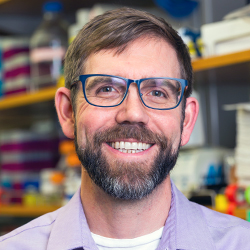New Platform for Engineering Ribosomes to “Cook New Cuisines”
Biological toolkit could help enable new manufacturing approaches to sustainable materials and targeted therapies
Synthetic biology researchers at Northwestern Engineering have developed a system that can rapidly create cell-free ribosomes in a test tube, then select the ribosome that can perform a certain function.
The system, called ribosome synthesis and evolution (RISE), is an important step toward using ribosomes beyond their natural capabilities. The key feature of RISE is the ability to evolve ribosomes without cell viability constraints. The result could be new ways to synthesize materials, like nylon, or therapies, like new antibiotics that could address rising antibiotic resistance.

The results were published February 28 in the journal Nature Communications.
The ribosome is like the chef of translation, cooking up the synthesis of a diverse array of biopolymers, or proteins, that enable life. Researchers have already used the ribosome’s ability to build proteins to develop new biopharmaceuticals, like insulin. But teaching ribosomes to cook “new cuisines,” or make biopolymers that are new to nature, is difficult. Since the ribosome is required for the life of the cell, there are big constraints on how it can be altered.
Jewett and his group developed the new RISE system to overcome those cell viability constraints and ultimately repurpose the ribosome in ways that have never been possible before. By building DNA that encodes for ribosome mutants, the system can make hundreds of thousands of mutant ribosomes within hours. Using magnetic beads, researchers can then select ribosomes with functions that they want. This platform sets the stage to understand the fundamental constraints of the ribosome’s active site and create new biopolymers that could transform society. Additionally, the method could potentially be used to manufacture new materials to improve soldier and police protection.
“We validated the RISE method by selecting highly active ribosomes that are resistant to the antibiotic clindamycin from a library of variants,” Jewett said. “Our hope is that others will be able to use this platform to select for ribosomes that can carry out a new function.”
With the ability to evolve ribosomes at hand, Jewett’s team has separately been trying to understand which parts of the ribosome are amenable to change. In a related paper recently published in the journal Nucleic Acids Research, the team also mapped out the nucleotides of the active site of the ribosome to find out which nucleotides could be changed without breaking the ribosome. By building and testing every possible single nucleotide mutation in the active site, 180 in total, the researchers were surprised to find that 85 percent of these nucleotides possessed some flexibility and could be altered. Additionally, the method could potentially be used to manufacture new materials to improve soldier and police protection.
“It proves to us that you can change almost every nucleotide in the active site and still get a functional ribosome. This is so exciting for synthetic biology,” Jewett said.
Last year, the researchers also published a paper in which they developed a set of design rules that guide how ribosomes can incorporate new kinds of monomers not found in nature.
Together, this collection of papers provides a comprehensive platform for transforming the ribosome into a machine that can create new kinds of therapeutics and materials.
“Right now, the ribosome is a chef that can only make certain meals,” Jewett said. “We want to create many chefs that can make many different cuisines. This is a huge step forward toward that vision.”
The research is part of the Defense Department’s Multidisciplinary University Research Initiative program, which is supported by the Army Research Office.
“This collection of results represents a truly exciting step towards harnessing and adapting the biological cellular machinery to produce non-biological polymers,” said Dawanne Poree, polymer chemistry program manager, Army Research Office, an element of US Army Combat Capabilities Development Command’s Army Research Office. “If successful, this work will, in essence, bring synthetic materials into the realm of biological functions, and potentially rendering advanced, high-performance materials capable of catalysis, molecular encoding and data storage, nanoelectronics, self-healing, among many other functions.”